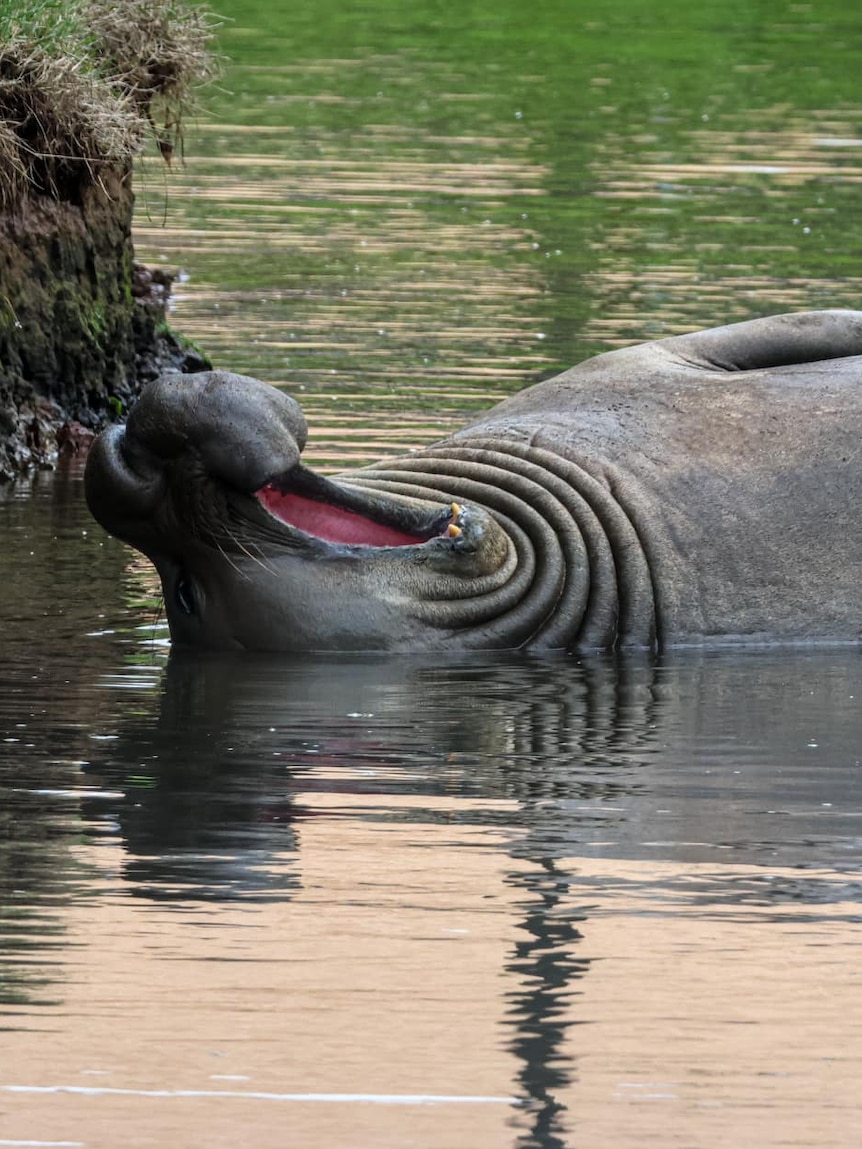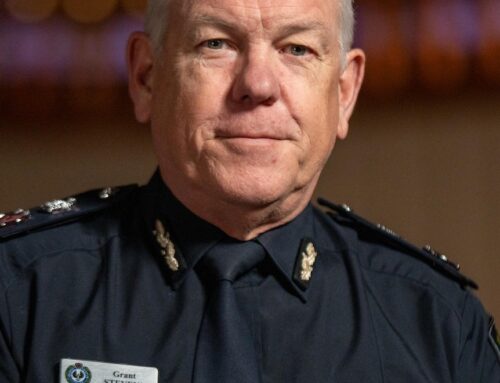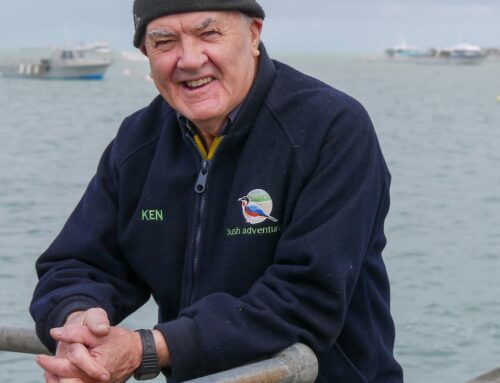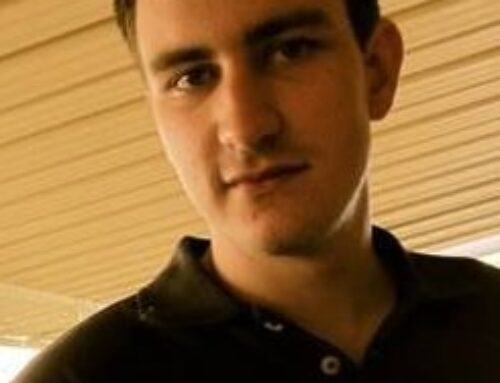Sammy the elephant seal is a long way from where his family normally lives near Antarctica, but he appears to be very comfortable in his new home in south-west Victoria.
He has become somewhat of a tourist attraction in Portland but, even more so, a curiosity for locals who watch for the four-tonne seal’s latest moves.
Sammy spends most of his time sleeping on the banks of a canal next to the town’s botanic gardens.
It is a perfect place to observe him, and locals like Tracey Brumby do not even need to get out of their cars to photograph him.
“I come down as much as I can just to sit and watch what he’s doing,” Ms Brumby said.
“He’s so big and he’s so amazing, and you bring your kids down here and they’re like, ‘Wow, look how big he is’.
“I just love him.”
Portland resident Tracey Brumby enjoys watching Sammy from her car. (ABC South East SA: Eugene Boisvert)
Unusual sight on mainland
Sammy first arrived in Portland a few years ago as a juvenile but has kept coming back a couple of times a year as he has become the huge elephant seal he is now.
Elephant seals normally live on sub-Antarctic islands as well as in southern Argentina.
Clive McMahon, who leads a program that puts trackers on elephant seals, said Sammy most likely was born on Macquarie Island about 2,220 kilometres south-east of Portland.
But he could also be from Heard Island or the Kerguelen Islands.
Photographers wait to catch Sammy’s antics. (Supplied: Allen McCauley)
Dr McMahon said the species used to have a colony on King Island in the Bass Strait and can sometimes be seen in Tasmania.
But it is unusual to see one on Australia’s mainland.
“It’s a rare occurrence and one that’s quite fantastic for the people that have the privilege to see that,” Dr McMahon said.
Elephant seals on Macquarie Island. (Supplied: Tasmania Parks and Wildlife Service)
Elephant seals are weaned from their mothers at 24 days and then take to the sea in search of food.
Dr McMahon said Sammy was likely resting after feeding in the Southern Ocean.
He has also been known to visit Portland in summer for moulting.
Dr McMahon said scientists believed young elephant seals cycled between time in the ocean and the land until their periods on land matched up with the adult seals they could breed with down south.
Some like the notorious Tasmanian social media star Neil the seal never make the move.
“It’s time for Sammy to get to Macquarie Island,” Dr McMahon said.
Sammy surfs the waves
Apart from lying on the banks of the canal Sammy can often be seen on Trawler Wharf where fishers unload their catches and at Portland’s Crumpets surf beach.
Russell Phillips first saw Sammy a couple of years ago while surfing at Crumpets.
Sammy at Crumpets beach in Portland. (Supplied: Allen McCauley)
Sammy headed straight towards Mr Phillips as he was waiting for a good wave, which he said was an “intimidating but fascinating” experience.
He makes sure to get out of Sammy’s way when he is in the water.
“It’s a unique experience for the Portlanders and we love him,” Mr Phillips said.
“In Portland we have encounters with whales, dolphins, seals, and the odd orca, and it’s unreal.”
Surfer Russell Phillips enjoys seeing Sammy at the beach. (ABC South East SA: Eugene Boisvert)
Apart from its marine wildlife, Portland is known for its deepwater port, from which millions of tonnes of woodchips are exported from every year, and its giant aluminium smelter.
Sealers and whalers operated from the area before Portland became Victoria’s first permanent European settlement in 1834.
Portland Tourist Association president Joy Hocken, who is also the general manager of Portland Cable Trams, said Sammy added to the variety of experiences available for visitors to the town of 10,000.
“There’s so much to see and do here, and Sammy has become an added attraction for everyone,” she said.
Sammy’s canal is next to the Portland Botanic Gardens. (ABC South East SA: Eugene Boisvert)
Strict rules to protect seals
Under Victorian law people have to stay 30 metres away from a seal or 50 metres if they have a dog.
Seals can transmit bacteria to people and other animals if they bite and can give diseases to dogs.
Victorian Conservation Regulator forest and wildlife officer Han Auld said Sammy was healthy despite his unusual habits.
Victorian Conservation Regulator officers Han Auld and Adam Taylor watch out for Sammy. (ABC South East SA: Eugene Boisvert)
Ms Auld said most people were doing the right thing and not getting too close.
“We’re just really calling out for the community to be respectful of him and his space and if they see someone doing something non-compliant they can call Crime Stoppers,” she said.
A previous seal that lived in Portland, a much smaller fur seal also called Sammy, had to be put down in 2019 after becoming aggressive.
Too many people were feeding it fish scraps from a wharf at the port.
“So we’re definitely asking the community to not feed a seal because that is when they become reliant on humans,” Ms Auld said.
“They’ll see a human and react and want to be fed.
“So that’s another regulation that we’re here to enforce — that if we are seeing people offending and feeding him we’ll be on patrol and following up those reports as well.”
People who see a sick or injured seal in Victoria can call Zoos Victoria’s Marine Response Unit on 1300 245 678.




